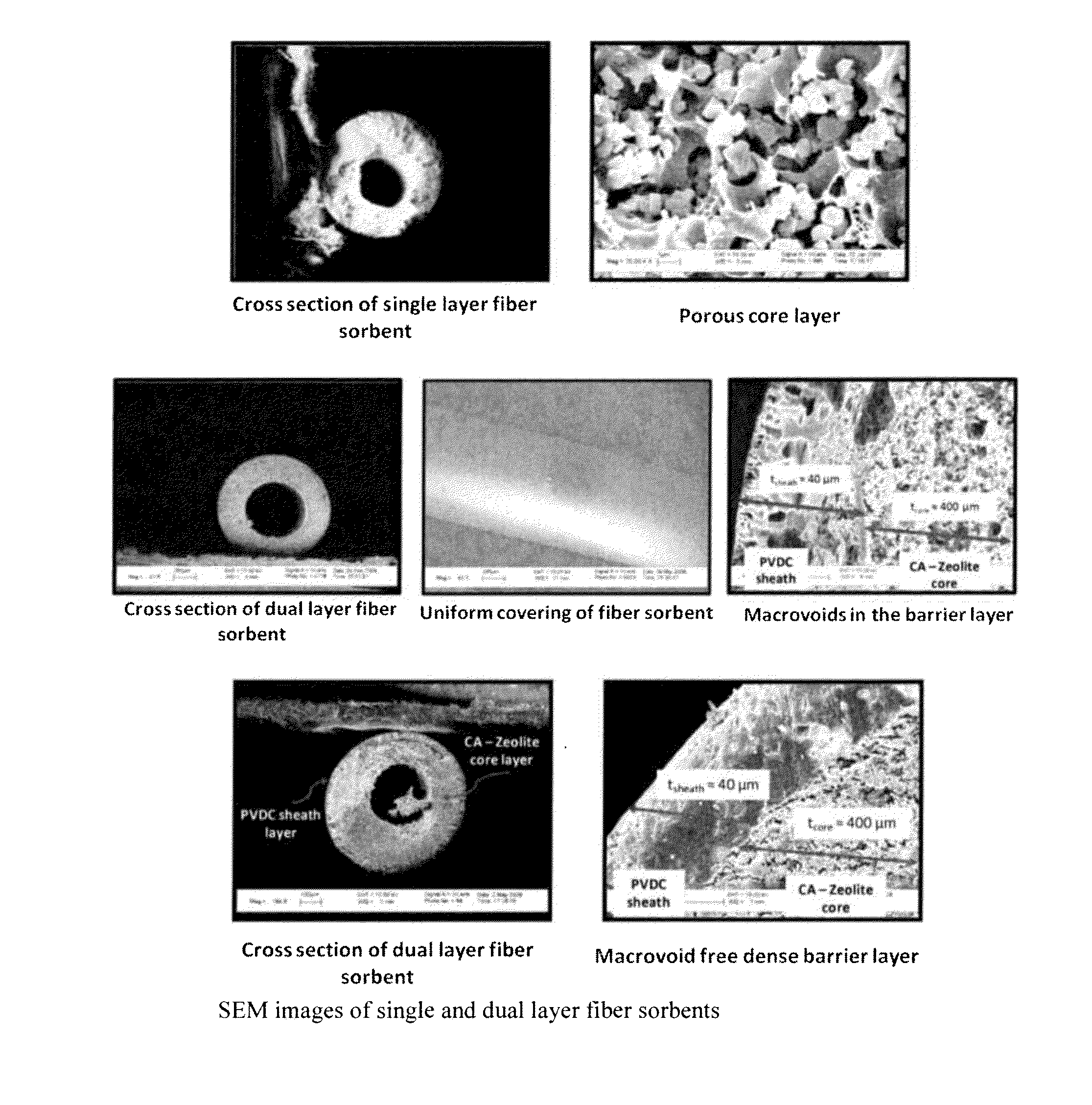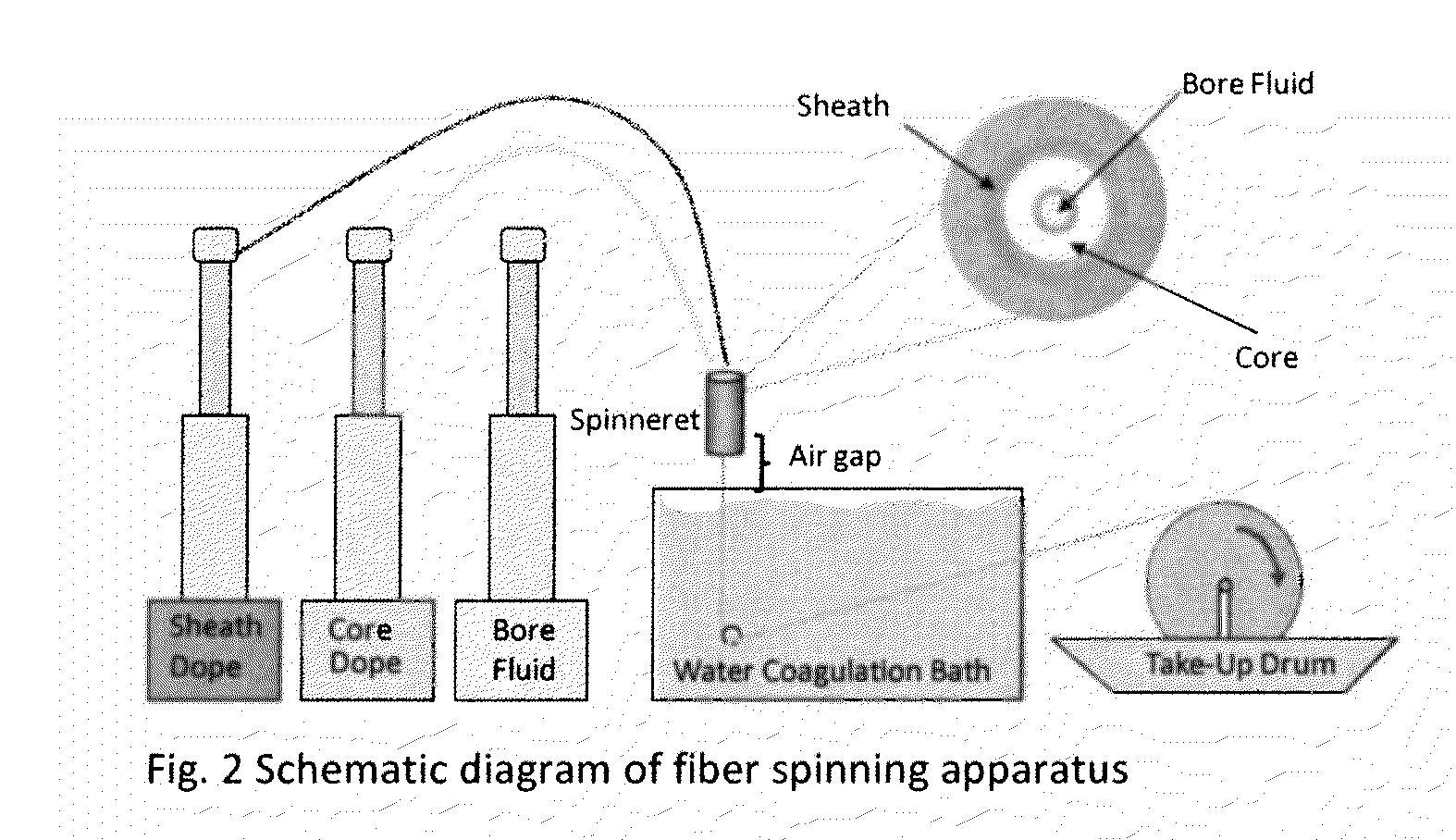Fiber sorbents
a fiber sorbent and sorbent technology, applied in the field of fiber sorbents, can solve the problems of ineffective and commercially attractive methods of removing sulfur compounds, inability to efficiently and effectively remove and inability to achieve hydrogen distribution. effect, the effect of removing low-level contaminants from gas streams both effectively and efficiently
- Summary
- Abstract
- Description
- Claims
- Application Information
AI Technical Summary
Benefits of technology
Problems solved by technology
Method used
Image
Examples
examples
Fiber Sorbent Core Dope Preparation in General
[0065]Fiber sorbent dopes are usually made close to a two phase binodal curve as shown in FIG. 1 to facilitate faster phase separation and higher porosity. Dopes in smaller quantities, e.g., 15 ml, may be made by varying solvent, non-solvent and zeolite composition to determine one and two phase regions using the cloud point technique described in, for example, Kosuri, M. R. and W. J. Koros, Defect free asymmetric hollow fiber membranes from Torlon®, polyamide-imide polymer, for high-pressure CO2 separations. Journal of Membrane Science, 2008. 320(1-2): p. 65-72.
[0066]A dried pore former such as Polyvinyl Pyrrolidone (PVP) is dissolved in a solvent such as N-Methyl-2-Pyrrolidone (NMP) in a 1000 ml glass container using a sonication bath (Model 1510R-MTH, Branson Ultrasonics, Danbury, Conn.). After PVP is completely dissolved, a sorbent, e.g., zeolite NaY (Zeolyst CBV-100, Valley Forge, Pa. with average particle size of about 500 nm and S...
PUM
| Property | Measurement | Unit |
|---|---|---|
| Temperature | aaaaa | aaaaa |
| Temperature | aaaaa | aaaaa |
| Temperature | aaaaa | aaaaa |
Abstract
Description
Claims
Application Information
 Login to View More
Login to View More - R&D
- Intellectual Property
- Life Sciences
- Materials
- Tech Scout
- Unparalleled Data Quality
- Higher Quality Content
- 60% Fewer Hallucinations
Browse by: Latest US Patents, China's latest patents, Technical Efficacy Thesaurus, Application Domain, Technology Topic, Popular Technical Reports.
© 2025 PatSnap. All rights reserved.Legal|Privacy policy|Modern Slavery Act Transparency Statement|Sitemap|About US| Contact US: help@patsnap.com



